City infrastructure and public facilities should be designed to meet the needs of residents year-round, not just during specific seasons, say experts.
Colourful umbrellas across the city. Streets lined with cut fruit and juice sellers. Making plans for long vacations. Summer season in Bengaluru is not just about this. Lack of bus shelters. No drinking water at metro stations. Construction labourers working in the scorching heat. The city’s infrastructure is underprepared to beat the heat.
According to the Transport Engineering Cell (TEC) of the Bruhat Bengaluru Mahanagara Palike (BBMP), of Bengaluru’s 2,212 bus stops, 1,412 of them have bus shelters. Despite the BBMP’s earlier announcement that the remaining bus shelters would be constructed by March 2023, Gangadhar, an official at the TEC, said that there are no ongoing projects to build new bus shelters in the city.
Radha, a student and a frequent commuter on the Challaghatta to K. Gollahalli route said that she often finds it difficult to wait for buses in the scorching heat due to the lack of waiting sheds. “Buses on this route are not timely. Sometimes I have to wait around 30 minutes to an hour to catch a bus (BMTC bus no. 228). The absence of a bus shelter near the Rajarajeshwari Medical College and Kumbalgodu bus stops worsens the situation, especially during the rainy season and the summers,” she said. She added that she and the other commuters usually wait in any available shade they can find near the bus stops.
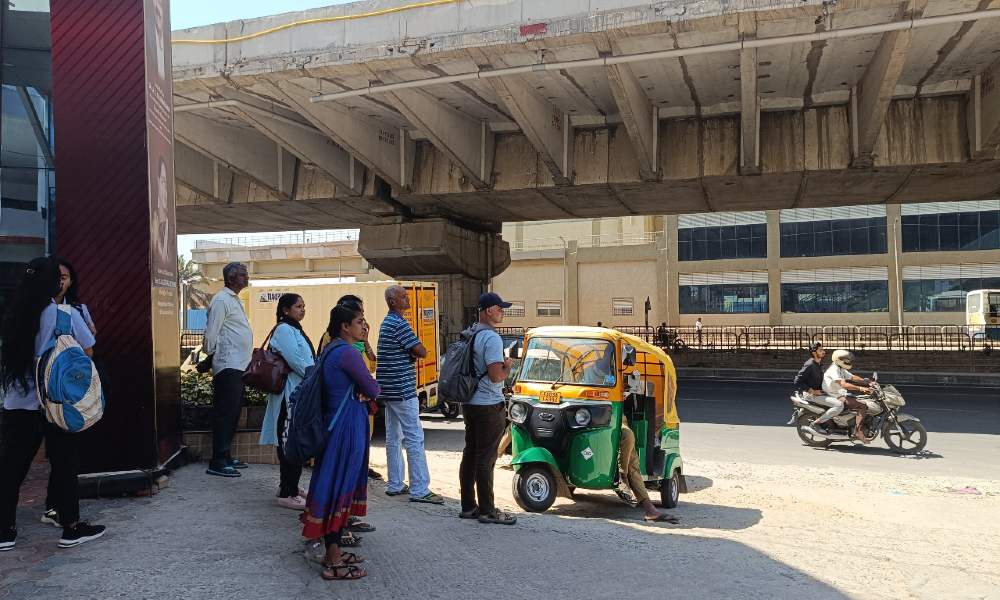
Bengaluru experienced an unusually hot February this year, with the average temperature reaching around 31 degrees Celsius, three degrees above the usual temperature for this time of year. According to data, Bengaluru’s mean temperature rose from 23.8 degrees Celsius in 1979 to 24.3 degrees Celsius in 2023.
The Heat Wave Action Plan of the Government of Karnataka mandates the construction of shelters and sheds in public places, parks, and open areas to provide shade. Furthermore, the plan directs the transport department to ensure that bus terminals and stops have shelter or shade and that major bus stops provide drinking water facilities. However, this does not seem to be the case in the city.
The Karnataka government’s plan also requires employers to adjust the working hours of outdoor workers to avoid peak hours (12 noon to 3 p.m.) and provide a shed for resting and drinking water facilities for workers at all workplaces. However, Tapan and Kamal who work as construction labourers in the city say that this is not always followed. Tapan works as a mason, while Kamal is a welder, and they are both currently employed at a site near the K.R. Market. They said that they are not provided drinking water or time for rest at their work site. “We carry our water bottles and take rest during our lunch break from 1 p.m. to 2 p.m. Rest of the time we continue working outside despite the heat. This takes a toll on our health, leaving us exhausted at the end of the day,” they said.
Meena Patil, Assistant Labour Commissioner, said that currently there are no guidelines in place that regulate the work timings of construction workers. However, she emphasized that it is the responsibility of the contractors to ensure the well-being of the workers. “According to the Building and Other Construction Workers Act, 1996, all construction workers must be provided with basic facilities such as drinking water and adequate breaks, regardless of the climatic conditions,” she said.
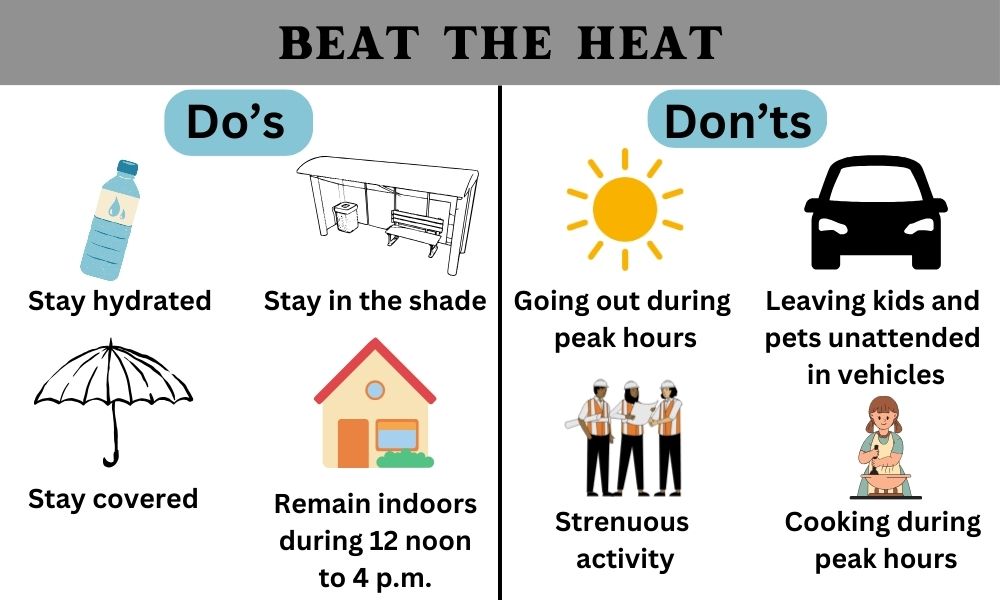
According to earlier reports, the newly opened Challaghatta metro station had a non-functional drinking water dispenser. Although the authorities promised to resolve the issue at the earliest, it has not been fixed yet. A staff member at the station said that despite repeatedly bringing the matter to the attention of officials, the water dispenser has remained non-operational for months. She said, “Commuters frequently complain about the lack of drinking water at the metro station, but no action has been taken to fix the dispenser. The staff also faces difficulty due to the lack of drinking water at the station when the water they bring from their homes runs out.”
Metro stations including Kengeri Bus Terminal and Singayyanapalya also previously reported irregular water supply. Ravi, a guard at the Kengeri Bus Terminal metro station, said that while drinking water is available at the station, the supply is inconsistent. “Whenever there is a water supply issue, we inform the authorities who promise to look into the matter,” he said.
It was also reported that the drinking water facilities at certain metro stations were located outside their paid areas making it difficult for commuters to access them without exiting the stations. These stations include Cubbon Park, Sir M. Visveswaraya Station, Central College, Krantivira Sangolli Rayanna Railway Station, Nadaprabhu Kempegowda Station, Majestic, Dr. B.R. Ambedkar Station, Vidhana Soudha, and Mahatma Gandhi Road.
Srivas Rajagopalan, the Executive Assistant of Public Relations at Bangalore Metro Rail Corporation Limited (BMRCL), said that the issue of irregular drinking water supply at the Kengeri Bus Terminal and Singayyanapalya metro stations has been resolved. However, they are still working on fixing the problem at the Challaghatta metro station. He said, “During summers, it is common to face some challenges when it comes to the supply of drinking water in the city. Nevertheless, BMRCL is working to ensure that such problems are dealt with promptly.”
Regarding the unavailability of drinking water at the Challaghatta metro station, he said that the issue was due to the lack of water supply by the BBMP in the area. “The station uses a borewell for its water needs, and the hard water blocks the water purifier, leading to a lack of drinking water at the station,” he said. He added that they will fix the situation at the earliest.
On the availability of drinking water facilities outside the paid area in some metro stations, he clarified that this was to ensure that drinking water was available even to non-commuters.
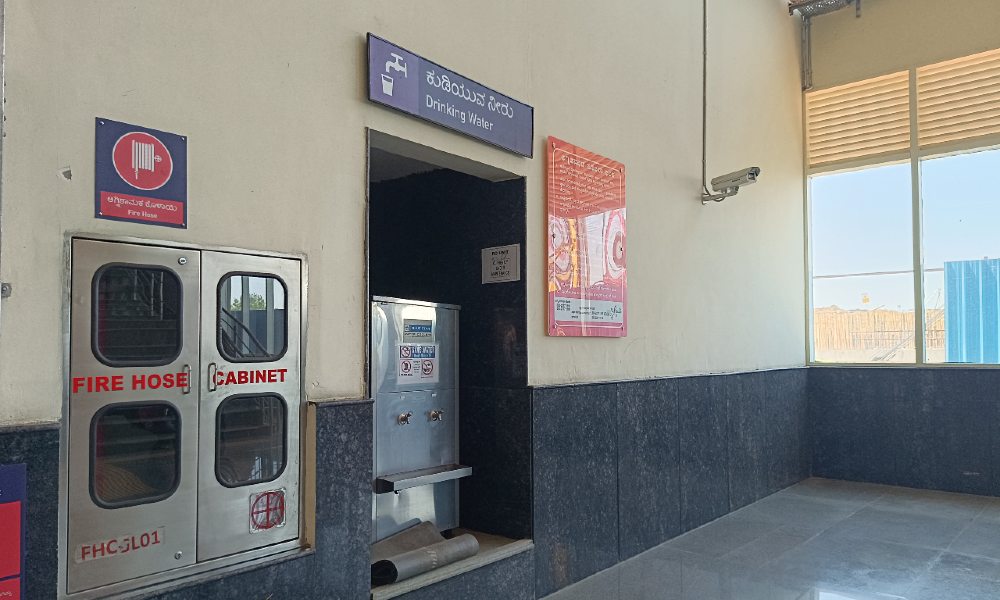
Das, a working professional, who relies on his two-wheeler for transport said that with the advent of summer, he has started using protective gear such as hand gloves and cloth to cover his face while being out in the sun. “I always carry a water bottle along with me and relish the cut fruits from the stalls to stay hydrated and cool during the heat,” he said.
Roja and Hemawathi who sell cut fruits near the BBMP head office said that while people buy cut fruits during the summer, their sales have not increased much over the last few years. “People mostly prefer watermelons during the summers, so there are not many takers for our mixed fruit options,” they said.
Naveen, another cut fruit seller said that the sale of cut fruits has not returned to pre-COVID levels. “After COVID, people prefer to eat cut fruits from other bigger stalls leaving us with fewer sales,” he said.
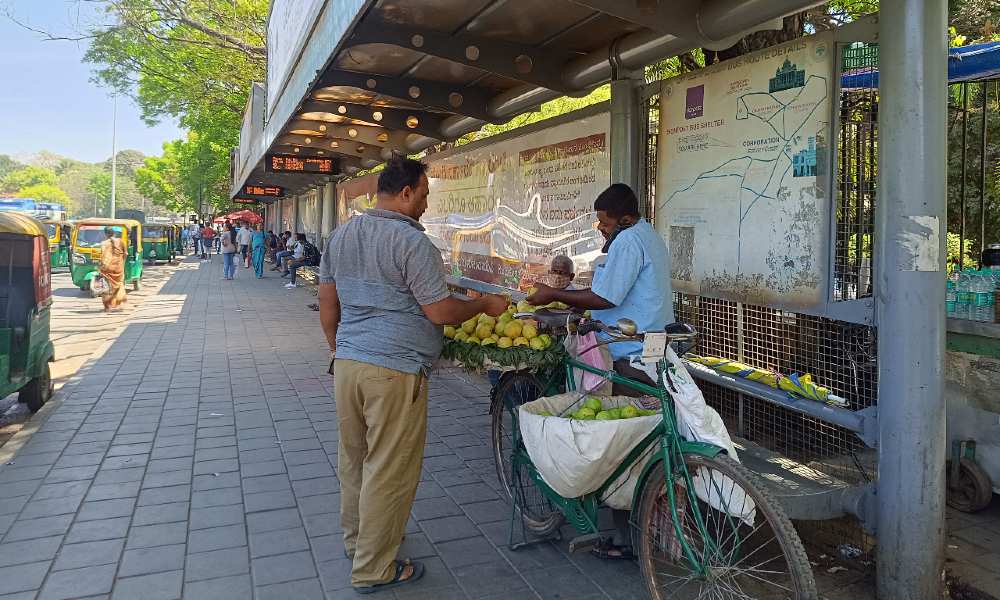
According to the World Health Organization’s (WHO) guideline on ‘Preventing health effects of heat,’ people should avoid going outside during the hottest time of the day and engaging in strenuous physical activity. It advises the public to stay in the shade and keep themselves hydrated. The WHO also emphasises the responsibility of authorities to provide access to cool spaces and offer active assistance to those at the highest risk.
The guidelines highlight the insufficient knowledge of the public regarding the health hazards that heatwaves and prolonged exposure to high temperatures can pose. It underscores the effectiveness of practical, feasible, and often low-cost measures that can be taken by individuals and governments to save lives.
WHO reports that rising temperatures affect everyone, but certain groups face a higher risk. These include the elderly, infants and children, pregnant women, outdoor and manual workers, athletes, and those living in poverty. Even small variations from seasonal average temperatures are linked to an increase in illness and death. This can also exacerbate chronic conditions such as cardiovascular, respiratory, and cerebrovascular diseases, as well as diabetes-related conditions.
Dr. Prajwal K.C., a general physician, said heat stroke is a severe medical condition that can occur due to prolonged exposure to extremely high temperatures. “When the body’s temperature rises, and the sweat mechanism fails, it becomes difficult for the body to cool down. This can lead to several symptoms such as headaches, confusion, heavy sweating, nausea, giddiness, and even loss of consciousness,” he said. He added that temperatures above 40 degrees Celsius can cause heat-related illnesses, including heat cramps, heat exhaustion, and heat stroke.
“Although rising temperatures can affect anyone, individuals aged 60 years and above are at the highest risk,” he explained. Therefore, public places must have ample shelters and shaded areas, good ventilation, and access to drinking water. “Construction workers who work outdoors during peak temperatures should take sufficient breaks and stay hydrated,” he added. In the event of someone suffering from a heat stroke, bystanders should move them to a shaded area, lower their body temperature by wiping them with cold water, and immediately call for medical assistance, he advised.
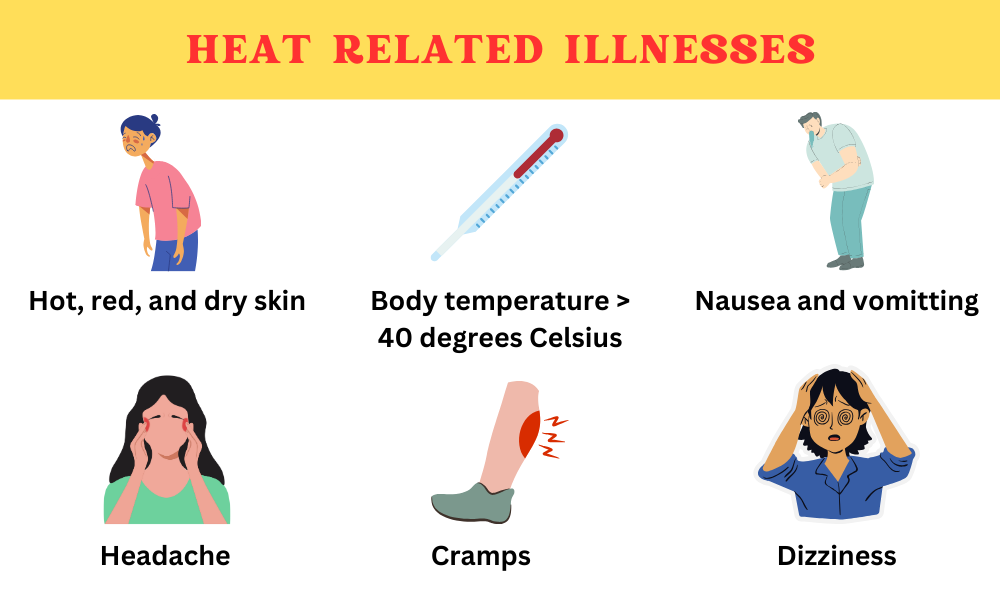
Prof. M.N. Sreehari, Advisor to the Government of Karnataka for Traffic, Transportation, and Infrastructure, said that it is the joint responsibility of Bengaluru Metropolitan Transport Corporation (BMTC) and the BBMP to ensure that all the bus stops in the city have shelters. “BMTC operates approximately 6,600 buses across almost 400 routes, each with 10 to 12 bus stops, and it is important that these stops have shelters regardless of the season,” he said. He suggested that BMTC and BBMP can work together with advertisers and sponsors to construct these shelters, thus managing the cost of construction.
“It is essential to have drinking water facilities at all metro stations, not only to quench commuters’ thirst but also for medical emergencies,” he said. He added that ensuring the well-being of construction workers is the responsibility of their contractors. The contractors must provide these workers with drinking water, first-aid boxes, and other basic facilities, he said. “The authorities need to monitor and take necessary action against any contractor who violates these obligations,” he added.




